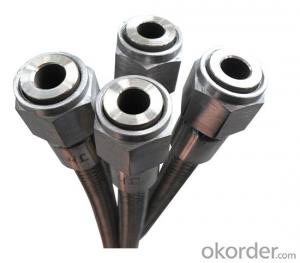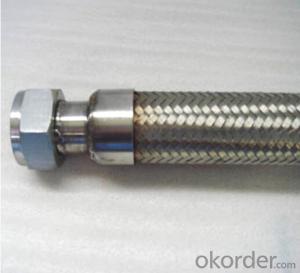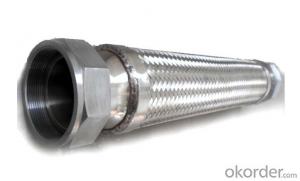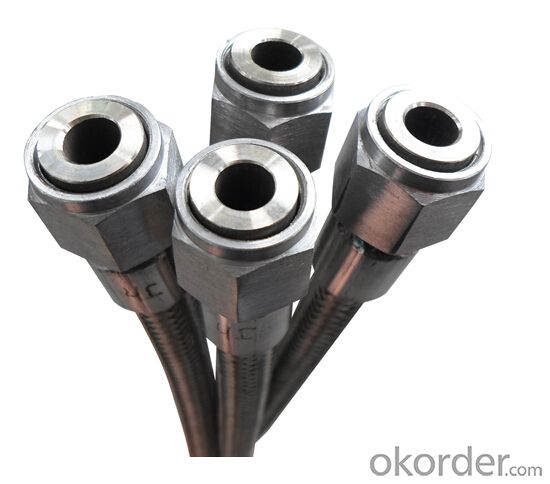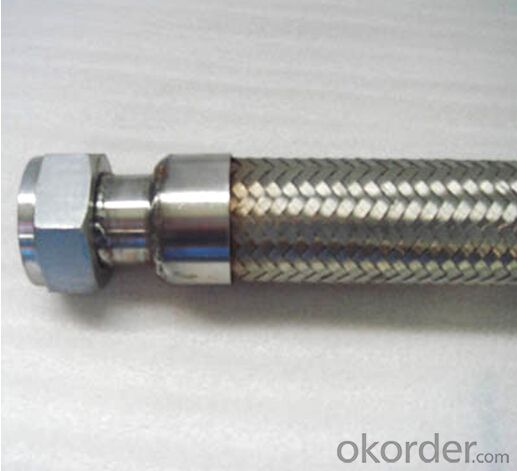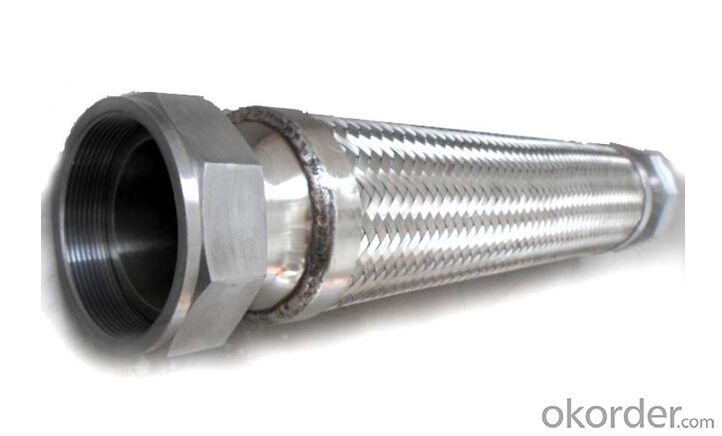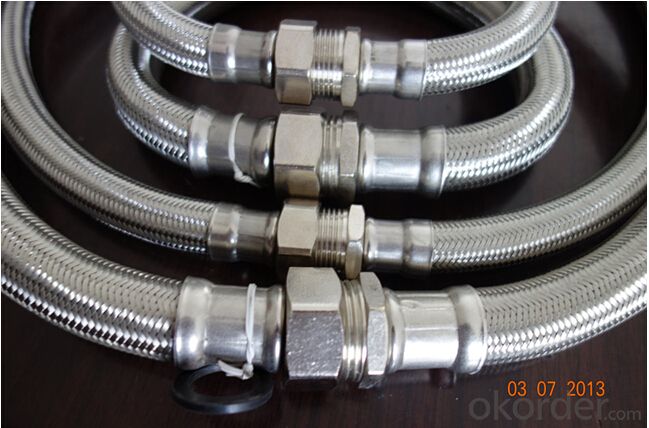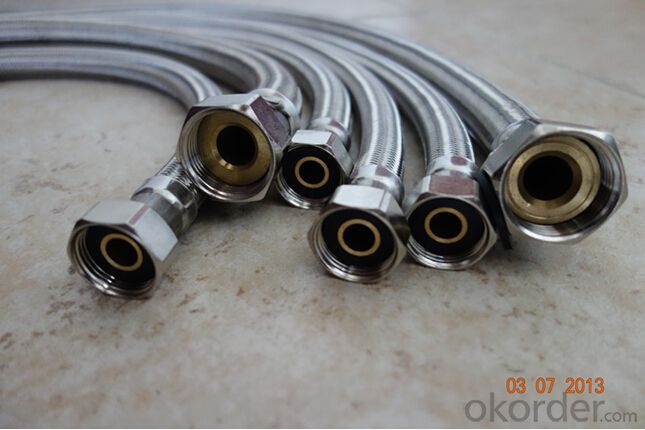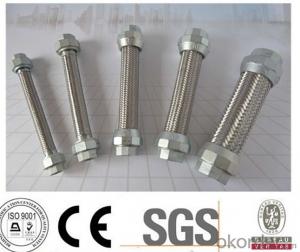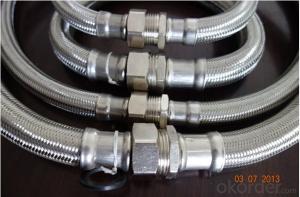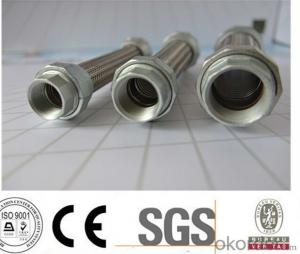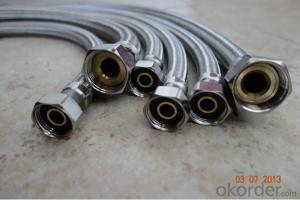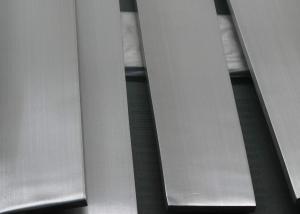Stainless Steel Braid Hose for Special Equipment
- Loading Port:
- Tianjin
- Payment Terms:
- TT OR LC
- Min Order Qty:
- 1000 pc
- Supply Capability:
- 100000 pc/month
OKorder Service Pledge
OKorder Financial Service
You Might Also Like
Specification
Stainless Steel Braid Hose for Special Equipment
Applications of Stainless Steel Braid Hose for Special Equipment:
--Refueling system
--Chemical and pharmaceutical industry
--Industrial hydraulic systems
--Air conditioners in industrial and construction –site vehicles
--Food and beverage industry
--Special and standard industrial applications
--Water and cleaning management
Features of Stainless Steel Braid Hose for Special Equipment:
1. )O. D.: 13-18MM 0.2-3M long
2. )Nut.: Nickel/Chrome Plated Brass (Zinc / Iron / Aluminum is available)
3. )Size Of Nut.: Female&Male 1/2''; 3/4''; 3/8''; 7/8''; 5/16'', and M10...
4. )Insert.: Brass (Zinc / Aluminum / Plastic is available)
5. )Inner tube.: Rubber/ EPDM/PVC
6. )Covered Material: Stainless Steel 201, 301, 304 /Aluminium Wire
7. )Working Pressure: 5Kg-15Kg
8. )Temperature: 0-92° C
9. )Quality Assurance: 3 years
RemarkAPPLICATION: HOUSEEHOLD WARE, BATHROOM WARE, SHOWER HOSE
PAYMENT: T/T, L/C
DELIVERY TIME: 20DAYS OR 30DAYS AFTER RECEIVED 30% DEPOSITS
MOQ: 5000PCS
ODM&OEM IS ACCEPTABLE
PackageInner: PP bag /Blister packing Outer: Carton box
Specifications of Stainless Steel Braid Hose for Special Equipment:
NO | I.D | Refer to O.D | Working pressure | Burst pressure | approximate Weight | |||||
(inch) | (mm) | (inch) | (mm) | MPa | Psi | MPa | Psi | kg/m | lbs/ft | |
1 | 1/8 | 3.2±0.2 | 0.35 | 9±0.3 | 2.06 | 300 | 8.27 | 1200 | 0.078 | 0.12 |
2 | 5/32 | 4±0.2 | 0.4 | 10±0.3 | 2.06 | 300 | 8.27 | 1200 | 0.092 | 0.14 |
3 | 3/16 | 4.8±0.2 | 0.43 | 11±0.3 | 2.06 | 300 | 8.27 | 1200 | 0.108 | 0.16 |
4 | 1/4 | 6.3±0.3 | 0.5 | 12.7±0.3 | 2.06 | 300 | 8.27 | 1200 | 0.134 | 0.2 |
5 | 5/16 | 8.0±0.3 | 0.56 | 14±0.3 | 2.06 | 300 | 8.27 | 1200 | 0.147 | 0.22 |
6 | 3/8 | 9.5±0.3 | 0.63 | 16±0.4 | 2.06 | 300 | 8.27 | 1200 | 0.182 | 0.27 |
7 | 15/32 | 12±0.3 | 0.75 | 19±0.5 | 2.06 | 300 | 8.27 | 1200 | 0.238 | 0.35 |
8 | 1/2 | 12.7±0.4 | 0.78 | 20±0.5 | 2.06 | 300 | 8.27 | 1200 | 0.262 | 0.39 |
9 | 5/8 | 16±0.4 | 0.94 | 24±0.5 | 1.03 | 150 | 4.12 | 600 | 0.351 | 0.52 |
10 | 3/4 | 19±0.4 | 1.13 | 28.8±0.5 | 1.03 | 150 | 4.12 | 600 | 0.515 | 0.77 |
11 | 1 | 25.4±0.5 | 1.38 | 35±0.6 | 1.03 | 150 | 4.12 | 600 | 0.637 | 0.95 |
Images of Stainless Steel Braid Hose for Special Equipment:
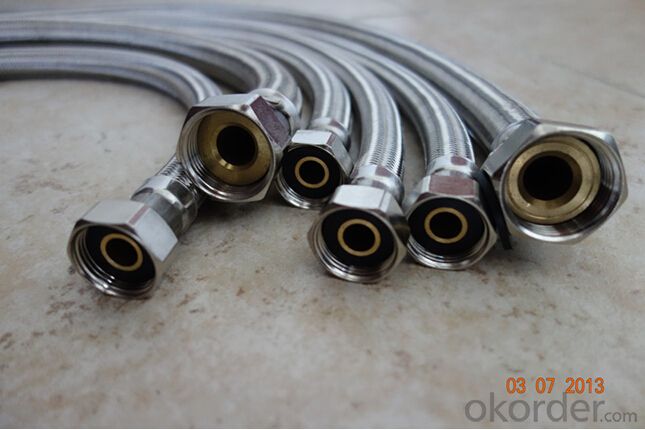
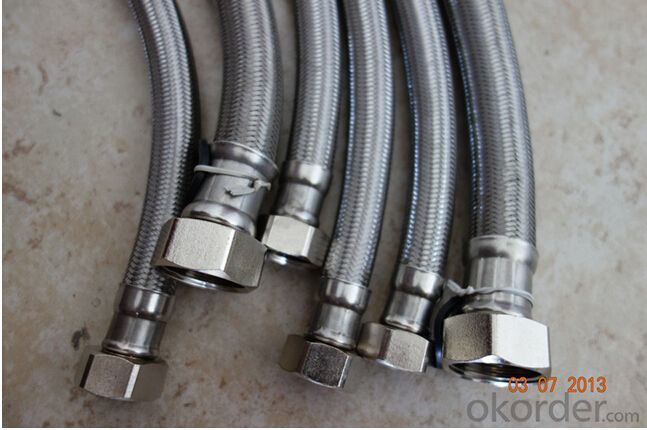
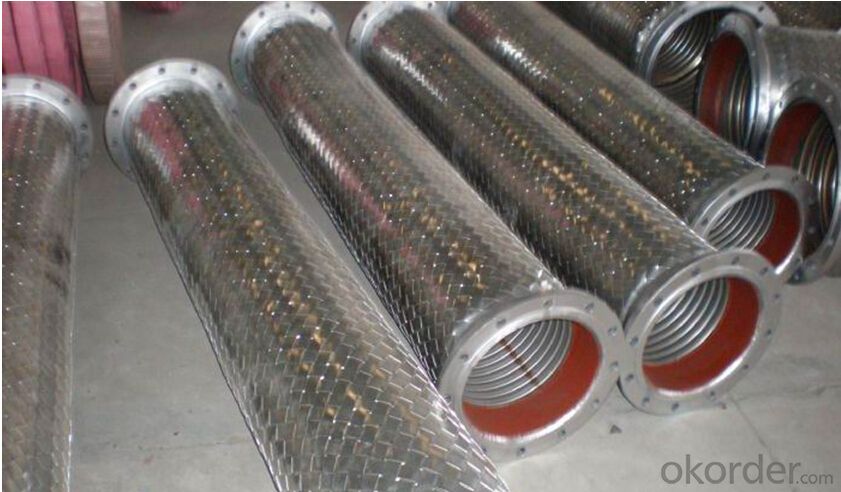
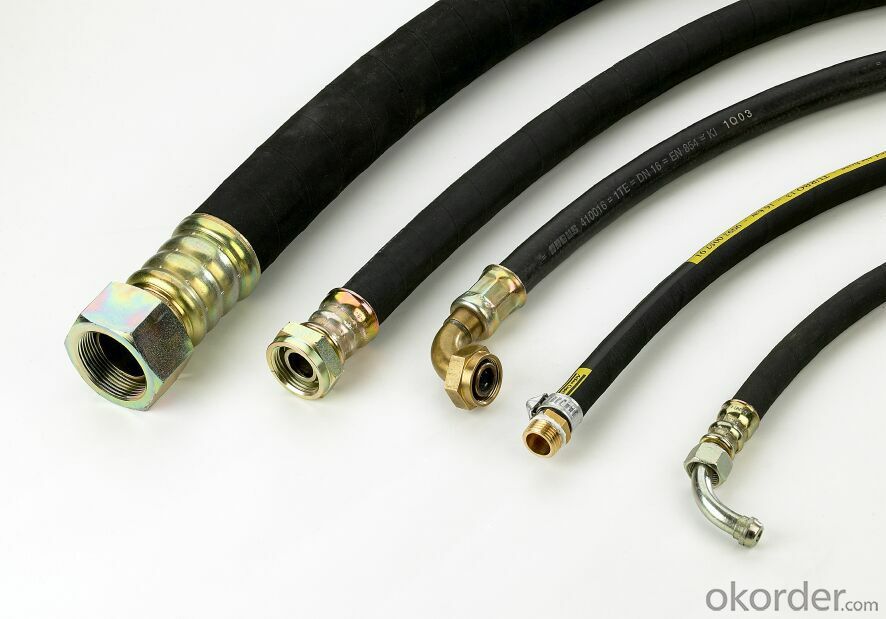
Package of Stainless Steel Braid Hose for Special Equipment:
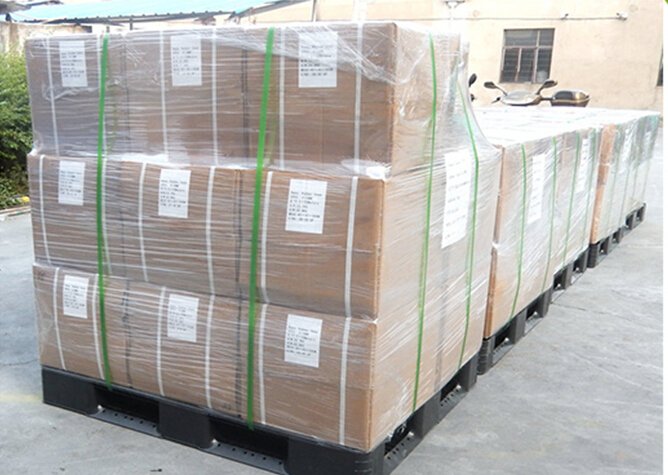
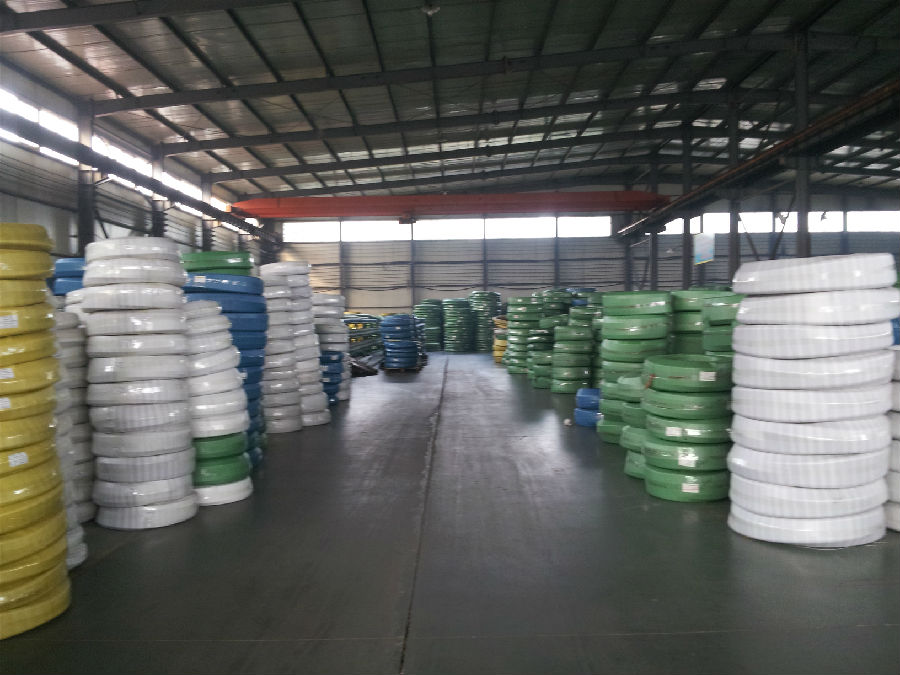
FAQ of Stainless Steel Braid Hose for Special Equipment:
Who we are:
Answer: We CNBM is a Chinese state-owned enterprise ranked 267th among the Global Fortune 500, as the largest building materials company,we have over 300 affiliated companies,and so many production lines and branch office distribute in China.
2. About our quality:
Answer: Every product needs to be quality proved before shipping.
3. About our service:
Answer: We could gurantte that we can reply you in 2 working hours.
- Q: What brand of stainless steel pipe cutting machine is good?
- Cut stainless steel tube, choose what brand is good, not the most important, first of all depends on what method to cut the best, the current cutting methods are saw blade, saw blade, laser, plasma, turning tools and so on.
- Q: Can stainless steel pipes be used for refrigeration systems?
- Indeed, refrigeration systems can utilize stainless steel pipes. Stainless steel, being an exceedingly robust material, exhibits exceptional resistance against corrosion, rendering it perfectly suitable for deployment in refrigeration systems where both moisture and low temperatures are prevalent. Moreover, stainless steel pipes boast remarkable thermal conductivity, facilitating efficient and effective heat transfer throughout the entire system. Furthermore, stainless steel pipes are effortlessly cleanable and maintainable, while also demonstrating the capacity to withstand significant pressure, thereby making them highly appropriate for deployment in refrigeration systems necessitating unwavering and enduring performance.
- Q: Are stainless steel pipes suitable for heat exchangers?
- Yes, stainless steel pipes are suitable for heat exchangers. Stainless steel is known for its excellent heat resistance properties, making it an ideal choice for applications involving high temperatures. It can withstand extreme heat without deforming or losing its structural integrity. Additionally, stainless steel is highly corrosion-resistant, which is crucial for heat exchangers as they are often exposed to corrosive fluids or environments. The corrosion resistance ensures the longevity and reliability of the heat exchanger, reducing the risk of leaks or failures. Stainless steel pipes also offer excellent thermal conductivity, allowing for efficient heat transfer between the fluids in the exchanger. Overall, stainless steel pipes are widely used in heat exchangers due to their durability, corrosion resistance, and ability to withstand high temperatures.
- Q: Can stainless steel pipes be used for underground sprinkler systems?
- Underground sprinkler systems can indeed utilize stainless steel pipes. Stainless steel is renowned for its durability, corrosion resistance, and capacity to withstand extreme pressure and temperature. These characteristics render it an exceptional option for subterranean applications, where pipes are exposed to moisture, soil, and various environmental elements. Moreover, stainless steel pipes are non-reactive, guaranteeing that they won't pollute the water supply or compromise the quality of the irrigation water. Nevertheless, it is crucial to ensure the proper installation of stainless steel pipes, including suitable fittings and connections, to guarantee a dependable and effective sprinkler system.
- Q: What are the standard sizes for stainless steel pipes?
- Depending on the industry and application, the sizes of stainless steel pipes can vary. However, there are commonly used standard sizes that are widely accessible. Typically, stainless steel pipes are manufactured in nominal sizes ranging from 1/8 inch to 72 inches in diameter. These sizes are categorized using the Nominal Pipe Size (NPS) system, which refers to the approximate internal diameter of the pipe. Commonly used NPS sizes for stainless steel pipes range from NPS 1/8 to NPS 36. Additionally, stainless steel pipes are offered in different schedules, which indicate the wall thickness of the pipe. The most frequently used schedules for stainless steel pipes are Schedule 5, Schedule 10, Schedule 40, and Schedule 80. It is important to note that these standard sizes may slightly vary depending on the country or region. Therefore, it is recommended to consult the relevant standards and regulations specific to your location or seek guidance from a supplier to determine the exact standard sizes of stainless steel pipes available in your area.
- Q: Can stainless steel pipes be used for oil refinery applications?
- Yes, stainless steel pipes can be used for oil refinery applications. Stainless steel is widely used in the oil and gas industry due to its excellent corrosion resistance properties, high strength, and durability. Oil refineries deal with harsh and corrosive environments, including high temperatures, pressure, and exposure to various chemicals. Stainless steel pipes can withstand these conditions and offer long-lasting performance. Stainless steel pipes are resistant to corrosion caused by acidic and alkaline substances, which are commonly found in oil refinery operations. They also have good resistance to pitting and crevice corrosion, making them suitable for handling crude oil, petroleum products, and other corrosive media. Furthermore, stainless steel pipes can handle high temperatures without losing their strength and integrity. This is important in oil refineries where processes involve heating and cooling operations. In addition to corrosion resistance and high-temperature capabilities, stainless steel pipes also provide excellent mechanical properties. They are strong, durable, and have good weldability, making them suitable for the demanding conditions of oil refinery applications. Overall, stainless steel pipes are a reliable choice for oil refinery applications due to their corrosion resistance, high-temperature capabilities, and mechanical properties. They ensure the safe and efficient transportation of oil and petroleum products, contributing to the smooth operations of oil refineries.
- Q: What is the pressure rating of stainless steel pipes?
- The pressure rating of stainless steel pipes may vary based on various factors, including the grade of stainless steel, pipe wall thickness, and pipe diameter. Typically, stainless steel pipes have high pressure ratings due to the material's strength and corrosion resistance. However, consulting the relevant standards and specifications is necessary to determine the precise pressure rating for a specific stainless steel pipe. These standards (such as ASME B31.3 or ASTM A312) offer guidelines and calculations to establish the maximum allowable working pressure (MAWP) based on the mentioned factors. To ensure safety and prevent any potential failures or leaks, it is crucial to verify that the pressure rating of the stainless steel pipes is suitable for the intended application.
- Q: How is stainless steel pipe different from carbon steel pipe?
- Stainless steel pipe and carbon steel pipe find their usage in different industries due to their varying compositions, corrosion resistance, and price points. To begin with, stainless steel pipe consists of an iron alloy containing a minimum of 10.5% chromium. This addition of chromium forms a protective layer of chromium oxide on the pipe's surface, greatly enhancing its resistance to corrosion. Conversely, carbon steel pipe primarily comprises iron and carbon, lacking any additional alloying elements. This absence of alloying elements renders carbon steel pipe more susceptible to corrosion, particularly when exposed to moisture or harsh environments. Moving on, stainless steel pipe exhibits high resistance to corrosion and rust, making it suitable for applications requiring endurance against harsh conditions or exposure to corrosive substances. On the other hand, carbon steel pipe is more prone to corrosion and may necessitate additional protective coatings or treatments to prevent rusting. Lastly, the price of stainless steel pipe generally surpasses that of carbon steel pipe. This disparity in cost stems from the additional chromium content and the superior corrosion resistance provided by stainless steel. Carbon steel pipe, being a more basic and prevalent material, is generally more cost-effective and readily available. In conclusion, the significant disparities between stainless steel pipe and carbon steel pipe lie in their composition, corrosion resistance, and price. Stainless steel pipe offers superior corrosion resistance and durability, making it an ideal choice for applications where corrosion is a concern. Carbon steel pipe, while less resistant to corrosion, is more affordable and widely employed across various industries. Ultimately, the selection between these two types of pipes hinges on the specific requirements, budget, and environmental conditions of the intended application.
- Q: What are the different grades of stainless steel used in pipe manufacturing?
- There are several different grades of stainless steel that are commonly used in pipe manufacturing. These grades are designated by a number system, with the most common grades being 304, 316, and 430. Grade 304 stainless steel is the most widely used and versatile grade of stainless steel. It contains a high level of chromium and nickel, which gives it excellent corrosion resistance and durability. This grade is ideal for applications where the pipe may come into contact with corrosive substances or environments, such as in chemical processing plants or marine applications. Grade 316 stainless steel is similar to grade 304, but it contains a higher level of molybdenum. This additional element enhances the grade's corrosion resistance, particularly against chlorides and other harsh chemicals. Grade 316 is often used in industries such as pharmaceuticals, food processing, and coastal areas where saltwater exposure is common. Grade 430 stainless steel is a lower-grade option compared to 304 and 316. It has a lower level of nickel and does not contain molybdenum. While it still offers good corrosion resistance in many environments, it is not as resistant to certain corrosive agents as the higher grades. Grade 430 is commonly used in applications where cost is a primary consideration, such as for exhaust systems or decorative purposes. Other grades of stainless steel, such as 201 and 409, may also be used in pipe manufacturing, depending on the specific requirements of the application. Each grade has its own unique properties and characteristics, making it important to select the appropriate grade based on the desired performance, corrosion resistance, and cost considerations.
- Q: Can stainless steel pipes be used for power plants?
- Yes, stainless steel pipes can be used for power plants. Stainless steel is often chosen for power plant applications due to its high corrosion resistance and ability to withstand high temperatures and pressures. Power plants typically deal with aggressive environments and require materials that can withstand the conditions without deteriorating. Stainless steel pipes provide excellent resistance to corrosion from chemicals, gases, and water, making them ideal for power plant applications. Additionally, stainless steel pipes have low maintenance requirements, reducing downtime and overall cost.
Send your message to us
Stainless Steel Braid Hose for Special Equipment
- Loading Port:
- Tianjin
- Payment Terms:
- TT OR LC
- Min Order Qty:
- 1000 pc
- Supply Capability:
- 100000 pc/month
OKorder Service Pledge
OKorder Financial Service
Similar products
Hot products
Hot Searches
Related keywords
